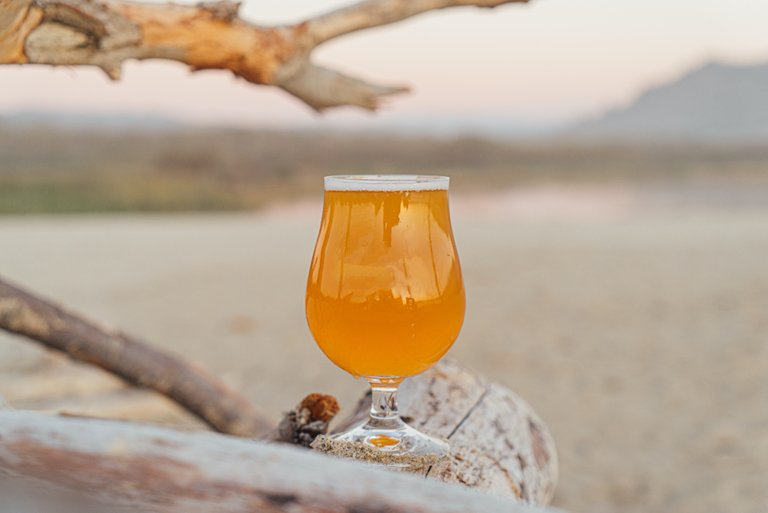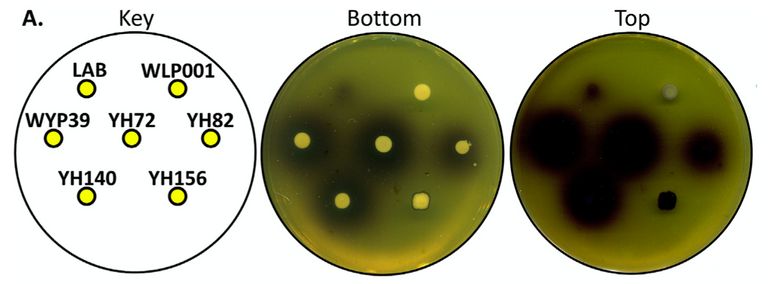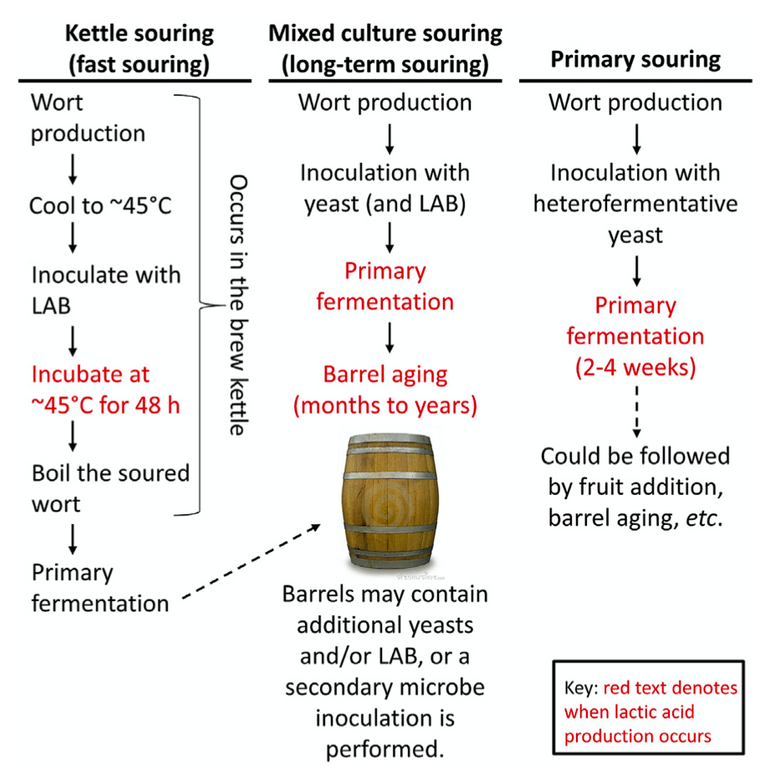The discovery of five heterofermentative yeast strains that can put a bite in your beer

Photo by George Cox on Unsplash
Heterofermentative Yeasts that make your sour beer sing (and sour)
We will step away from mashing and focus on the beer brewing process. More specifically, we will look at a new methodology, suited to create sour beers, without lactic acid bacteria (LAB). Yes, it is time to update our sour beer recipe books.
While I say "new", the paper described here was published in 2017 by the group of Dr Matthew Bochman. In essence, the work reports on the identification and use of yeast strains from five distinct species, able to produce lactic acid on their own. Their discovery has opened the door to a LAB-free brew procedure, called primary souring, suited to make sour beers. Pretty cool (or sour!).
How are sours made?
Before we delve into the paper, let's first look at how typical sour beer production methodologies. We can divide existing sour beer brewing into two broad categories (see below).
The first and traditional approach is to sour your fermenting beer in barrels, using a mixed fermentation approach. Lactobacillus, present in the barrel will slowly lower the pH through the creation of lactic acid. As you can imagine, this process is time-consuming, sometimes subject to variation and requires space, skills and barrels.
The second, and a much faster approach, is a distinct souring step during or after preparing the wort. Here, brewers deliberately add LAB cultures to their wort and allow the bacteria to sour over a relatively short timeframe (24-48 hours). LAB cells are either killed off through a boil (wort) or pasteurization step. Many connoisseurs would describe these sours as "tart" and the beer profile as less complex. Some brewers add lactic acid directly to their brews and increase acidity this way.
Each methodology or process has both its advantages and drawbacks. Enter the primary souring method.
What is primary souring?
The primary souring method name exactly describes the process it denotes. This methodology consists of a single fermentation step during which ethanol and lactic acid, are produced. The application of a single step means that we don't need a separate souring stage in the brew.
How did the authors accomplish this feat?
The authors screened a vast number of yeast species for their ability to produce both lactic acid and alcohol. First, the authors went out bio-prospecting for wild yeasts. They then screened a collection of 284 strains, representing 54 species (or 26 genera), for their ability to produce alcohol and lactic acid. This work revealed isolates from five separate species that could make both compounds under brewing conditions. They are listed below:
Hanseniaspora vineae
Lachancea fermentati
Lachancea thermotolerans
Schizosaccharomyces japonicus
Wickerhamomyces anomalus
Pretty amazing.
The authors used a pretty neat method to assess lactic acid production, called the LASSO assay (LASSO: Lactic Acid Specific Soft-agar Overlay). With this approach, the authors grow strains of interest on an indicator medium that turns dark brown/black in the presence of lactic acid. These halos, surrounding the yeast colonies, indicate lactic acid production and diffusion from the cells. Below you will find an example from the paper.

Figure 2A from Osburn et al. (2017). Yeast strains, grown on plates in a LASSO assay. Lactic acid production and diffusion causes a reaction with the media, leading to the development of dark halos around LA+ colonies;
Are the selected yeast strains suited for beer production?
to answer that question, the authors asked ten volunteers of diverse background (and experience). Sensory analyses of beer, brewed by the laboratory, helped define the key characteristics of each strain. Interestingly and probably as expected, the beer profiles were rather diverse, ranging from tart to intensely fruity flavours, suggesting that these novel yeasts are worth considering for sour beer production.
Why is this important?
Brewers, both at home and as professionals, will always seek to innovate and make the best possible beer, using the most efficient methodologies. The availability of strains with distinct characters, suited for sour beer making, clearly allows for developing new sour beer production methods and possibly, beer styles. Notably, the authors summarised their findings and the implications nicely in the figure below.

Figure 3 from Osburn et al (2017). Schematic representation of the methodologies, used for three different sour beer brew processes. The use of heterofermentative yeasts, identified in this study, allows for the redesign of the brewing process.
These results also show, yet again, how bio-prospecting for yeast can help fill a void in the biochemical repertoire, available to brewers. We have to go out there and find the strains we need!
I hope you enjoyed this slightly shorter post. If you did, and you wish to have more background, please consider signing up for this newsletter or better yet, become a paid subscriber to support The Beerologist.
Cheers,
Edgar, The Beerologist.
Edgar Huitema is a Scientist, Brewer & Scientific Consultant at ExtrAnalytics (https://extranalytics.com/about-us/). Subscribe to my free newsletter to get the latest advances in science. Contact me if you wish to discuss your needs and our research.
Haha yes!
The blockchain is now churning out Beerologists and will become the repository for decentralized brewing knowledge sharing and marketing.
Solid stuff on a very progressive beer style!
Thank you sir!
Apparently I brought the whole gang here to appreciate and upvote this post! ;)
I loved having them over! Feel free to stop by anytime! Lots of beer stuff to talk about!!
Congratulations @huitemae! You have completed the following achievement on the Hive blockchain and have been rewarded with new badge(s) :
Your next target is to reach 10000 upvotes.
You can view your badges on your board and compare yourself to others in the Ranking
If you no longer want to receive notifications, reply to this comment with the word
STOPCheck out the last post from @hivebuzz:
Thanks for your contribution to the STEMsocial community. Feel free to join us on discord to get to know the rest of us!
Please consider supporting our funding proposal, approving our witness (@stem.witness) or delegating to the @stemsocial account (for some ROI).
Please consider using the STEMsocial app app and including @stemsocial as a beneficiary to get a stronger support.